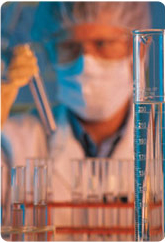
- Ask Our Expert
- +603-78457448


Medical researchers work at the micro- and nano-scales to develop new drug delivery methods, therapeutics and pharmaceuticals. For instance, DNA, our genetic material, is in the 2.5 nanometer range, while red blood cells are approximately 2.5 micrometers.
See “The Scale of Things” for a comparative view of the sizes of commonly known items and nanoscale particles:

Numerous products featuring the unique properties of nanoscale materials are available to consumers and industry today. Most computer hard drives, for instance, contain Giant Magneto Resistance (GMR) heads that, through nano-thin layers of magnetic materials, allow for a significant increase in storage capacity. Other electronic applications include non-volatile magnetic memory, automotive sensors, landmine detectors and solid state compasses.
Some other current uses that are already in the marketplace include:

There have been significant changes in the Science and Technology Policies of Asia Pacific countries since the announcement of the US National Nanotechnology Initiative in January 2000. Nanotechnology is now one of the main Science and Technology priority areas for Asia Pacific governments. Budgets for nanotechnology R&D have been increased substantially and more strategically allocated. Total spending for Asia Pacific countries has exceeded United States Dollars (USD) 1 billion for the past 2 years and will continue to increase.
Japan has been investing in nanoscience the 1980s and after the USA is the heaviest nanotechnology R&D spender worldwide, and along with China, South Korea and Taiwan has increased its budget substantially since 2001. Australia is currently formulating a national strategy, but already has considerable infrastructure and funding in place. Thailand, India and Vietnam have also identified nanotechnology as a priority area and are taking steps to implement the proper framework.
(Source: Institute of Nanotechnology)